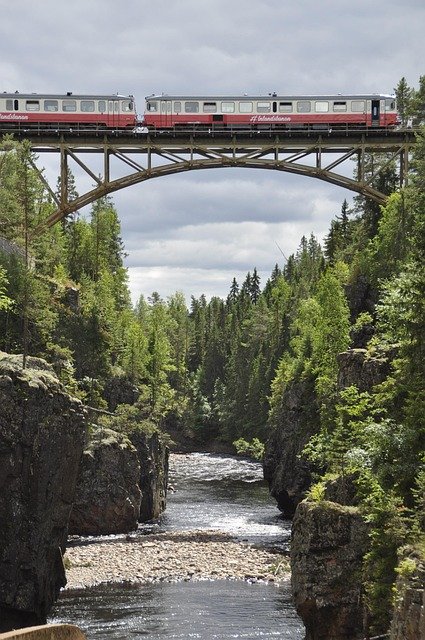Scenic Train Vacations Through the Rocky Mountains
The majestic Rocky Mountains serve as one of North America's most impressive natural wonders, stretching over 3,000 miles from New Mexico to British Columbia. While many travelers explore this stunning landscape by car or hiking trails, train vacations offer a uniquely immersive experience. These rail journeys combine the comfort of modern transportation with panoramic views of breathtaking mountain scenery that might otherwise remain inaccessible to the average traveler.

Popular Rocky Mountain Train Routes
The Rocky Mountains feature several iconic train routes that showcase the region’s diverse landscapes. The California Zephyr, operated by Amtrak, traverses the Continental Divide between Chicago and San Francisco, offering passengers spectacular views through oversized windows. The Rocky Mountaineer’s “First Passage to the West” route connects Vancouver to Banff, traveling through the Canadian Rockies with glass-domed cars for optimal viewing. Meanwhile, the Durango & Silverton Narrow Gauge Railroad in Colorado provides a historic steam train experience through rugged canyons and alongside rushing rivers.
Seasonal Considerations for Rocky Mountain Train Travel
Each season transforms the Rocky Mountain landscape, creating distinctly different train vacation experiences. Summer journeys (June through August) offer extended daylight hours and lush green valleys, ideal for photography enthusiasts. Fall trips (September to mid-October) showcase a tapestry of gold, orange, and red as aspen groves change color at higher elevations. Winter excursions reveal snow-covered peaks and frozen waterfalls, though some scenic routes operate on limited schedules. Spring departures (April to May) highlight wildflower blooms and rushing waterfalls from snowmelt, though weather can be unpredictable during this transitional season.
Accommodation Options During Train Vacations
Rocky Mountain train vacations offer various accommodation styles to suit different preferences and budgets. Many multi-day journeys include overnight stays at mountain lodges and historic hotels situated in picturesque towns along the route. Some premium services feature sleeper cars with private cabins, allowing passengers to experience the changing landscape from dawn till dusk without changing accommodations. Day-trip options typically depart from and return to the same location, offering comfortable seating without overnight accommodations. For extended vacations, many tour operators provide packages combining rail travel with stays at national park lodges or boutique mountain resorts.
Wildlife and Natural Highlights Along the Routes
Train travel through the Rocky Mountains provides exceptional wildlife viewing opportunities without disturbing natural habitats. Passengers regularly spot bighorn sheep perched on rocky cliffs, elk grazing in mountain meadows, and bald eagles soaring overhead. Bears, moose, and mountain goats make occasional appearances, particularly in less developed areas. Beyond wildlife, these journeys showcase remarkable geological features including imposing granite peaks, deep river canyons, and ancient fossil beds. Professional guides on many routes provide educational commentary about passing landmarks, ecology, and the historical significance of various sites.
Historic Significance of Rocky Mountain Railways
The railways cutting through the Rocky Mountains represent remarkable feats of engineering and played crucial roles in North American development. Construction of these routes in the late 19th century connected isolated mining communities, opened commerce between eastern and western regions, and established many towns that still exist today. Workers overcame immense challenges including harsh weather, rugged terrain, and dangerous working conditions to complete these rail lines. Many historic tunnels, bridges, and switchbacks remain in use, offering passengers glimpses into transportation history. Several routes operate restored vintage cars or steam locomotives, adding an authentic dimension to the travel experience while preserving railroad heritage.
Comparing Popular Rocky Mountain Train Vacation Providers
| Provider | Routes | Price Range (Per Person) | Notable Features |
|---|---|---|---|
| Rocky Mountaineer | Vancouver to Banff/Jasper, Seattle to Moab | $1,500-$7,000 | Glass-dome coaches, gourmet dining, hotel accommodations |
| Amtrak | California Zephyr (Chicago to San Francisco) | $150-$1,200 | Cross-continental journey, observation car, dining car |
| Durango & Silverton | Durango to Silverton (Colorado) | $94-$225 | Historic steam engines, open-air gondola cars, half/full day options |
| Royal Gorge Route | Canon City, Colorado loop | $69-$199 | Gourmet dining, wine tasting options, spectacular gorge views |
| Cumbres & Toltec | Antonito, CO to Chama, NM | $115-$210 | America’s highest narrow-gauge railroad, historic steam engines |
Prices, rates, or cost estimates mentioned in this article are based on the latest available information but may change over time. Independent research is advised before making financial decisions.
Photography Opportunities and Travel Tips
Rocky Mountain train journeys present extraordinary photography opportunities that require specific techniques for optimal results. When photographing through glass windows or domes, position the camera lens close to the surface to minimize reflections. Consider camera settings with faster shutter speeds to capture sharp images despite train movement. Many routes include outdoor viewing platforms where passengers can capture unobstructed photos and feel the mountain air. Travelers should pack layers regardless of season, as temperatures fluctuate dramatically with elevation changes. Binoculars enhance wildlife spotting opportunities, while comfortable shoes prove essential for exploration during scheduled stops. Reservations for popular routes often fill months in advance, particularly during peak summer and fall color seasons.
The timeless appeal of train travel combined with the natural grandeur of the Rocky Mountains creates a vacation experience that connects travelers with both natural wonders and historical context. These journeys offer an environmentally conscious alternative to driving while providing access to remote landscapes often missed by conventional travel methods. Whether as a dedicated vacation or incorporated into broader travel plans, Rocky Mountain train excursions deliver memorable experiences that showcase the dramatic beauty of North America’s most iconic mountain range.




